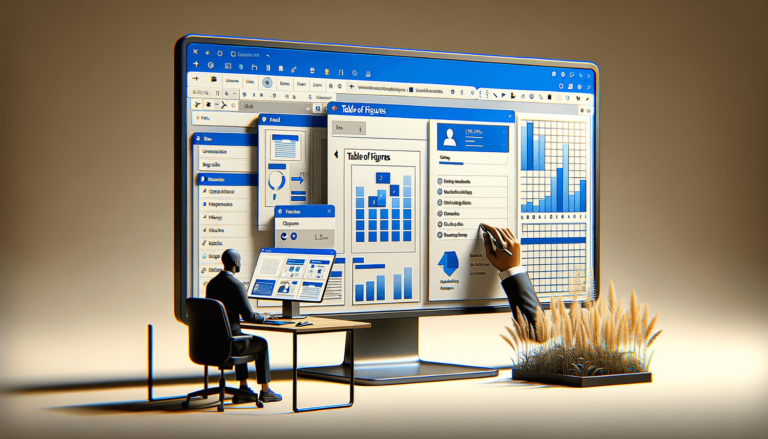
Creating a Table of Figures in Word
Creating a table of figures in Word is a simple process that enhances the professionalism and readability of your documents. This feature is particularly useful for lengthy documents that include multiple charts, graphs, or images, allowing readers to quickly locate and reference visual information. Here’s how you do it: first, add captions to your figures, then use the Insert Table of Figures feature to generate your list automatically. Remember, updating your table of figures after making changes to your document is also straightforward. Let’s dive into the detailed steps to achieve this.
Quick summary
- Add captions to each of your figures in the document.
- Insert a Table of Figures using the References tab.
- Customize your Table of Figures’ format and layout as needed.
- Update your Table of Figures to reflect any changes in the document.
Step 1: Adding Captions to Your Figures
Before creating a table of figures, each figure (be it a chart, graph, diagram, or image) in your Word document needs a caption. Place your cursor right below the figure, go to the References tab, and click Insert Caption. Enter the caption text in the box that appears and select a label (Figure, Table, Equation) as appropriate. This action will assign a sequential number to each figure, which is crucial for organizing your table of figures.
Step 2: Inserting a Table of Figures
With your figures captioned, navigate to the place in your document where you want the table of figures to appear. Go back to the References tab and select Insert Table of Figures. A dialog box will open, offering various customization options, such as the format of the numbers and titles. Adjust these settings to match your preference and click OK to insert the table.
Step 3: Customizing Your Table of Figures
The Table of Figures, by default, might not perfectly align with your document’s formatting or aesthetic. You can change the look and feel of your table by clicking on it and then selecting the References tab > Insert Table of Figures to revisit the customization options. Here, you can modify the tab leader, the label and page number formats, and whether or not to include headings. After adjusting these settings, click OK to apply the changes.
Step 4: Updating Your Table of Figures
If you make changes to your document that affect the figures (like adding new ones, removing some, or shifting their order), you’ll need to update your table of figures to reflect these changes. Simply click on your table, then press F9, or right-click and select Update Field. Choose to update the entire table to ensure all changes are captured.
At LearnWord.io, we’re passionate about giving you our trusted advice on how to effectively utilize Word’s features to enhance your documents. Creating a table of figures not only organizes your document but also elevates its professional appeal, making your information more accessible to readers. Remember, taking the time to properly format and update your table of figures can significantly impact the readability and professional quality of your work.
Conclusion
Creating a table of figures in Word is a straightforward process that brings considerable benefits to your document management and presentation. By following the steps outlined above, you can seamlessly integrate this feature into your documents, improving navigation and understanding for your readers. Remember, at LearnWord.io, we’re here to guide you through making the most of Word’s capabilities to enhance your writing and document organization.
Featured Posts
- No pillar pages found.








